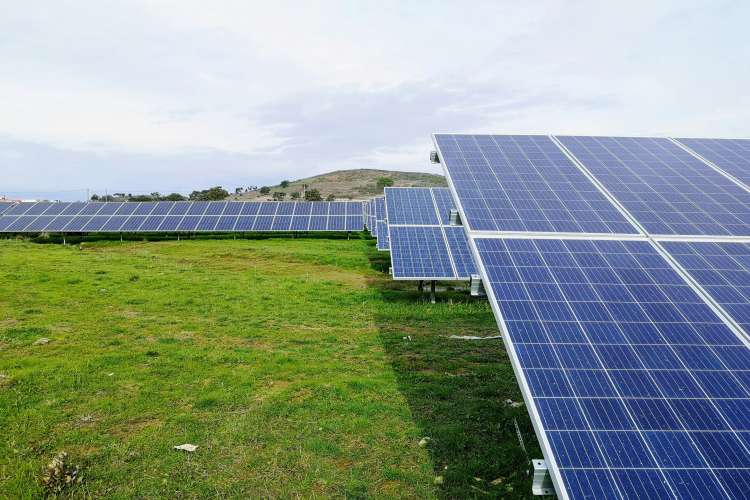
Solar energy’s ecological trade-offs: Development is often not the win-win proposition it is made out to be. In practice, achieving progress on some sustainable development goals can come at the cost of others. Environmental targets, for instance, are frequently compromised in the pursuit of economic and social imperatives. In such cases, trade-offs emerge in two broad forms. The first is driven by the constraints of limited natural resources, where mitigation is often not possible. The second stems from policy or institutional shortcomings, where better governance can help reduce the cost of trade-offs.
India provides striking examples of both categories—particularly in sectors such as renewable energy and agroforestry.
READ | Startup failures: Why India’s unicorns are falling apart
Solar energy: Land and livelihoods conflicts
The solar energy sector exemplifies the kind of trade-off where resource constraints make compromise inevitable. Solar power has the potential to substantially reduce India’s carbon emissions. Current policy frameworks are estimated to help cut emissions by four billion tonnes by 2030. Yet, India faces a basic challenge: there is little uninhabited, uncultivable, or ecologically barren land available at the scale needed for utility-grade solar installations.
This dilemma was brought into focus by the proposed 1,000 MW solar project in Assam’s Karbi Anglong district, jointly initiated by the central and state governments, with financial support from the Asian Development Bank (ADB). The project promised multiple gains—cutting Assam’s thermal power emissions by 10% annually, improving electricity access in underserved regions like Dima Hasao, and reducing climate-related risks such as extreme monsoon flooding.
But the project also came at a high cost: the acquisition of 2,405 hectares of agricultural and residential land from low-income communities, the felling of an estimated 10,000 trees, and potential disruption to the Nahorlangso Elephant Corridor and local biodiversity, including species like tigers and jungle cats. The project, although environmentally forward-looking in one sense, undermined other sustainability objectives—livelihood security and biodiversity preservation. In response to opposition from local communities, the ADB withdrew its funding.
Here, the state was forced to choose between competing SDG targets: climate change mitigation, energy access, biodiversity conservation, and protection of livelihoods. This is a situation where policy efficiency and equity, however well-designed, cannot fully eliminate the conflict. Natural resource constraints meant that there was likely no alternative, unused, or ecologically neutral land available for the project. In such contexts, sustainability must be seen through a more pragmatic, if compromised, lens.
The pitfalls of policy design
The second type of trade-off is preventable, and arises when policy frameworks fail to incorporate long-term environmental risks. Eucalyptus agroforestry, common in parts of Haryana and Punjab, is a case in point. Eucalyptus is a fast-growing tree species that provides steady timber income for farmers. But it is also a water-intensive, exotic species that depletes groundwater, degrades soil quality, and displaces native vegetation. Over time, it weakens the ecological foundation that sustains agriculture.
The proliferation of eucalyptus plantations in Haryana owes much to earlier state policies that promoted it without assessing long-term ecological consequences. Even today, with growing awareness of its environmental costs, the policy response remains muted. While Uttar Pradesh has encouraged farmers to shift to neem—a more sustainable, indigenous alternative with similar economic returns—a coordinated national or state-level approach to limit eucalyptus cultivation is still absent.
In Karnataka, similar governance gaps are visible in coffee-growing regions. As farmers accumulate capital, many opt to clear forest patches within their landholdings to expand cultivation. The state’s forest department introduced a scheme to reward farmers who retain native trees, but failed to account for the unintended consequence: that such rewards could serve as additional capital, enabling further deforestation. As a result, the very policy meant to protect biodiversity may have facilitated its erosion.
These examples show how poor policy design can generate counterproductive outcomes. Agroforestry improves rural incomes but weakens ecological resilience. Forestry incentives meant to conserve tree cover inadvertently encourage its removal. These are not inevitable trade-offs—they are the result of avoidable policy failures.
Need for state capacity and policy foresight
While some trade-offs—like those involving land for solar projects—are structurally unavoidable, others are the product of flawed governance. The lesson for India’s development strategy is that trade-offs should be recognised, analysed, and wherever possible, mitigated through evidence-based policymaking. That requires stronger state capacity—not only to design policies that weigh competing objectives, but also to anticipate unintended consequences.
Building a genuinely sustainable development framework will demand large-scale investment in ecological assessment, institutional reform, and long-term planning. Above all, it requires the political will to accept that not all sustainability goals can be pursued in parallel—and that making hard choices will be necessary. What matters is how well those choices are informed and how fairly their costs are distributed.
Divyanshi Sharda is a public policy graduate from Jindal School of Government and Public Policy, OP Jindal Global University.
